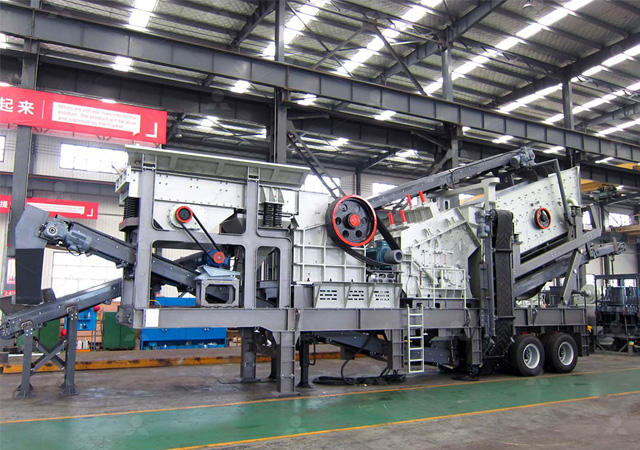A limestone mobile crusher is a powerful machine designed to process limestone into usable aggregates for various construction and industrial applications. The components of a limestone mobile crusher are designed to work together to ensure efficient crushing, screening, and mobility. Below is an overview of the key components:
1. Chassis and Frame
The chassis serves as the main structure of the mobile crusher. It is typically made from high-strength steel to withstand the rigors of transportation and operation. The frame holds all the crusher’s components together and is mounted on wheels or tracks for mobility. This component is essential for ease of transport to different job sites.

2. Crusher Unit
The crusher unit is the core part of the limestone mobile crusher. There are various types of crushers used for limestone processing, including:
- Jaw Crusher: A jaw crusher uses compressive force to break down large chunks of limestone into smaller pieces. It consists of two jaws—one fixed and the other movable—which crush the material when they close together.
- Impact Crusher: This type of crusher uses impact force to break the limestone. The material is struck by hammers that rotate at high speeds, causing it to fracture and break into smaller pieces.
- Cone Crusher: A cone crusher operates by compressing the limestone between a moving cone and a fixed cone. It is ideal for finer crushing and producing high-quality aggregates.
The choice of crusher unit depends on the desired output size and the type of operation (e.g., primary or secondary crushing).
3. Feeding System
The feeding system delivers the raw limestone into the crusher unit. It often consists of a vibrating feeder or a belt conveyor, which ensures that the material is fed into the crusher at a controlled rate. A properly functioning feeding system is critical for maintaining consistent processing and preventing material clogging.
4. Screening System
The screening system is crucial for separating different sizes of crushed limestone. It consists of a vibrating screen that classifies the material into different grades. The vibrating screen uses mesh to separate fine particles from larger ones. This ensures that the desired particle size is produced, which can be fed into further stages of processing or directly used in construction.
5. Hydraulic System
Hydraulic systems are used for several functions in the mobile crusher, including adjusting the discharge opening of the crusher (especially in cone crushers), lifting or lowering the hopper, and controlling the operation of the screening system. Hydraulic components provide the necessary force and precision to adjust different crusher settings.
6. Conveyors
Belt conveyors are used to transport the crushed limestone from the crusher unit to various stockpiles or to the next stage in the processing chain. The conveyors are typically designed for high capacity, ensuring smooth transportation of the material without blockages.
7. Control Panel
The control panel is the central point where the operator can monitor and adjust the various components of the mobile limestone crusher. It typically includes buttons, switches, and screens that control the crusher’s speed, settings, and feeding rate. Advanced models may also offer remote control features for easier operation from a distance.
8. Safety Features
Safety is paramount in mining and crushing operations. Mobile limestone crushers are equipped with various safety features, including emergency stop buttons, overload protection, safety guards, and alarms. These features protect both the equipment and the operators from potential hazards.
The components of a mobile limestone crusher are designed to work together to efficiently process limestone and other materials. From the feeding and crushing systems to the screening, conveyor, and power supply, each part plays a crucial role in ensuring the crusher’s effectiveness. A well-designed mobile limestone crusher is essential for improving productivity in industries like construction, mining, and cement production.

